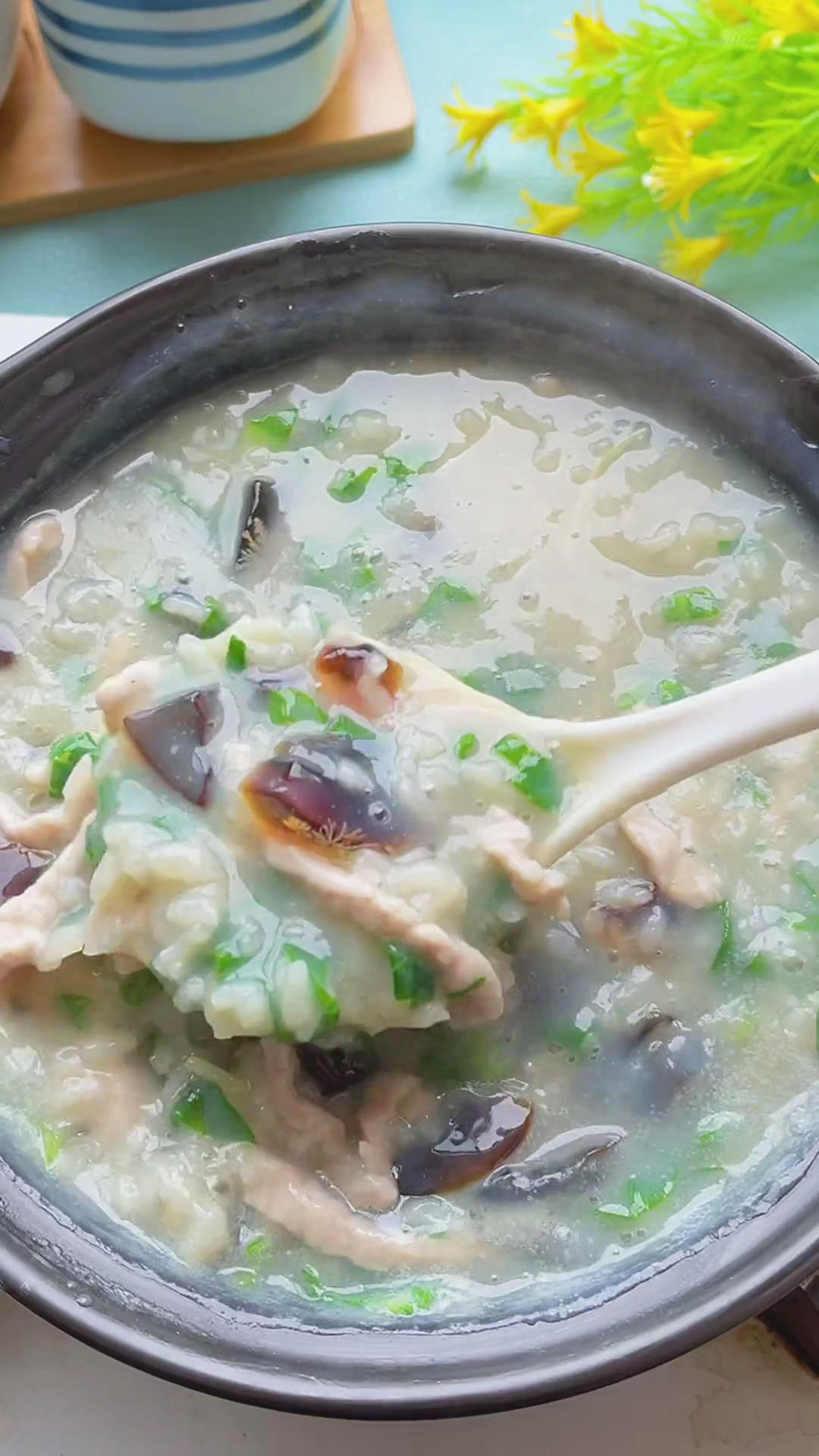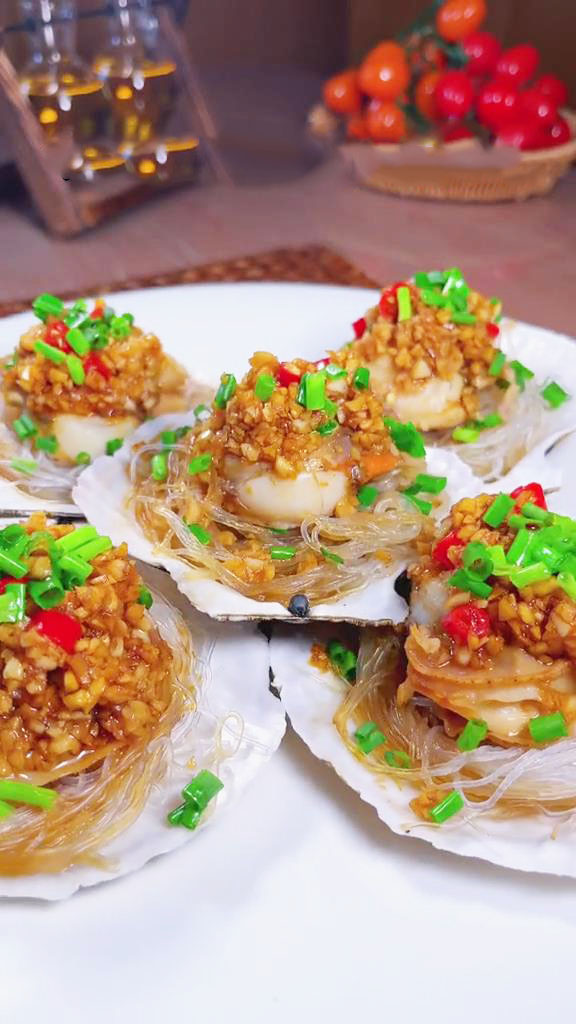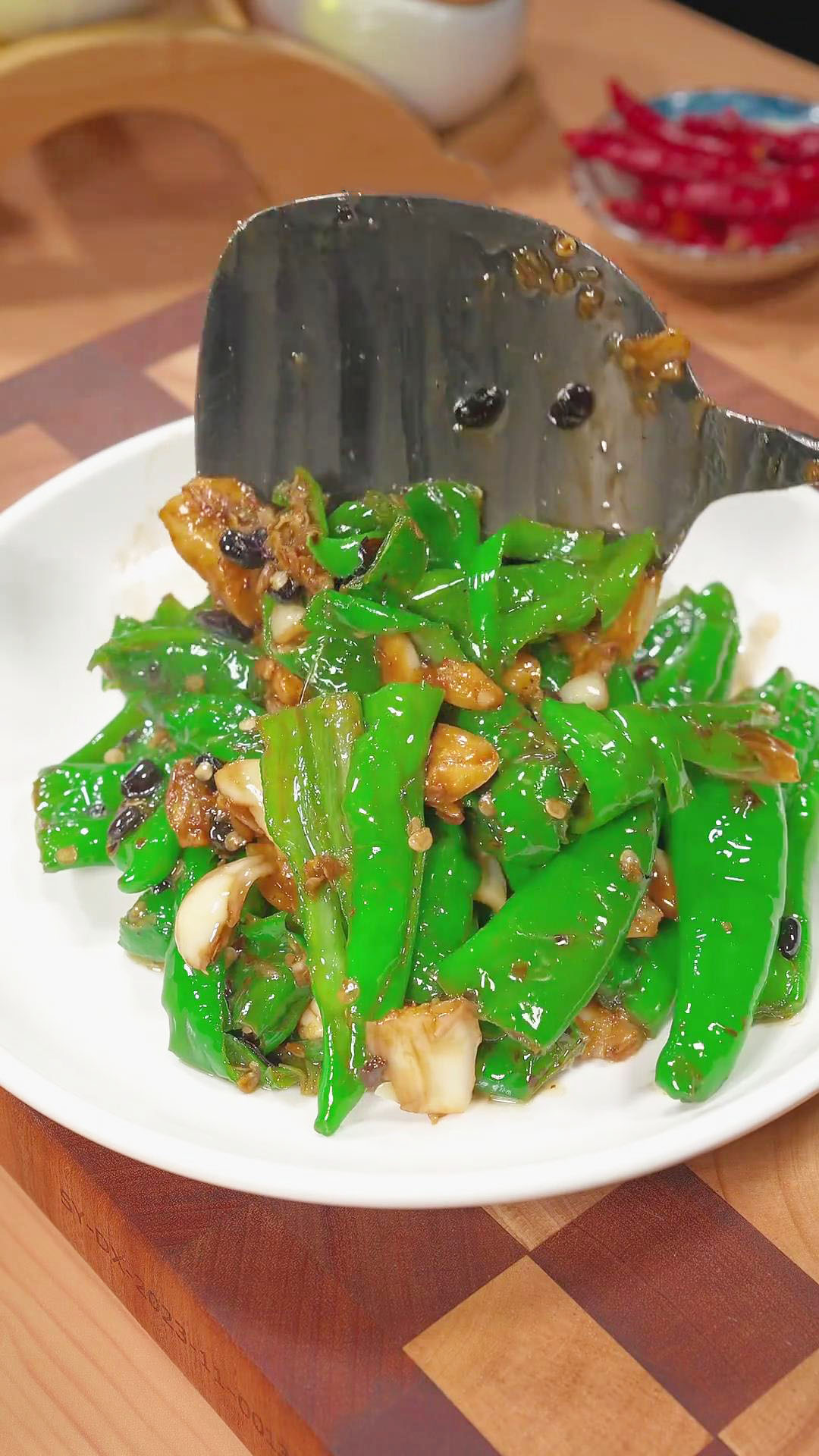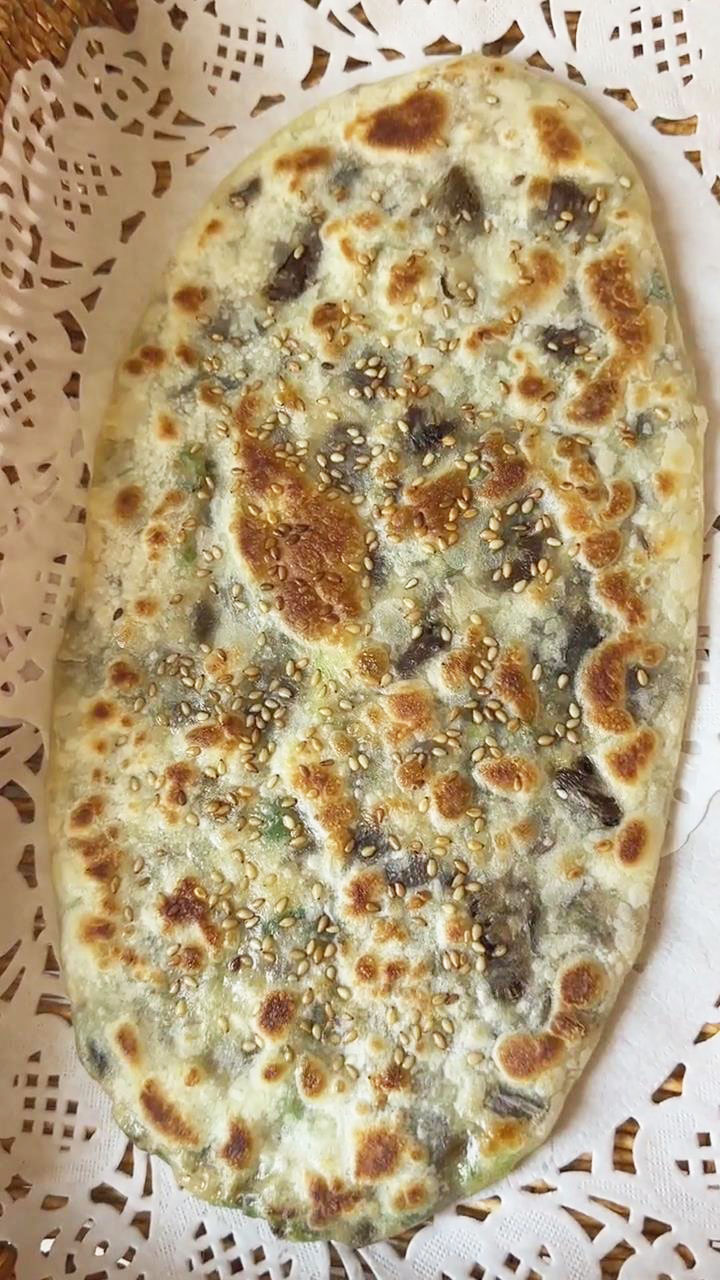Hearty, meaty, and melty – a bowl of congee is the ultimate comfort food for breakfast, lunch, or dinner. One of the best ways to enhance a plain bowl of congee is by adding century eggs and bits of juicy pork. Make this dish if you need a quick meal in just 5 simple steps!
What Is Century Egg and Pork Congee?
Century egg and pork congee or pi dan shou rou zhou is a traditional Chinese rice porridge (congee) dish that combines century eggs (also known as preserved eggs or hundred-year-old eggs) and pork. Century Egg and Pork Congee pairs perfectly with Cheung Fun for a satisfying breakfast or brunch experience.
Congee is a classic Chinese rice porridge made with boiled rice and water. You may know different versions of this, such as kayu in Japan, juk in Korea, and lugaw in the Philippines, to name a few. The best part of making congee is choosing your favorite toppings.

From vegetables to meat and sauces, there are countless ways to craft the perfect congee combination. I recommend checking out my top 35 Must-Try Congee Toppings to get an idea of what to put in your congee.
In this recipe, congee is paired with century eggs and marinated pork.
I marinated the pork with shredded ginger, salt, black pepper powder, cornstarch, and oil. The pork is added to the boiling rice with century eggs. Then, top it off with your preferred vegetables, sauces, or non-meat toppings.
All About Century Eggs (皮蛋)
What are century eggs anyway and what makes them special? Century egg (皮蛋), also called Pi Dan or thousand year eggs, is a type of preserved egg of a duck or chicken. The egg is preserved for a month in a mixture of salt, lime, clay, and rice, to name a few.
It is typically translucent with a dark brown color on the outside. Its center contains a dark green to gray yolk. When it comes to taste, it is pungent, bitter, and umami.
The egg white texture is jelly-like and bouncy, while the yolk is cheesy and slightly gooey. You don’t need to cook century eggs. Simply crack and peel and they are ready to be eaten.
Ingredient Tips And Recommendations
Simply put, you will need two century eggs, rice, pork, pork marinade, and vegetables. You may be wondering which type of rice or pork slice to use. So, I listed below my suggestions on the specific ingredients to use for this recipe.
- Century egg: Since this congee uses century egg as the main ingredient and flavor, you cannot simply omit this from the recipe. The recipe heavily relies on the unique taste of century eggs. If you use a regular egg, it will not yield the same taste as century eggs and will only be called a regular type of congee. Should you decide to remove it, use other types of eggs such as salted duck egg, raw egg yolk, or soft boiled egg.
- Pork: You can use pork loin, pork butt, pork chops, pork shoulder, or pork neck. Basically, any pork cut will do for the recipe. I prefer a pork cut that is not too lean or too fatty. If you prefer other types of meat, you can use chicken or beef.
- Rice: Use any type of rice you have on hand. However, I personally prefer long-grain or short-grain rice. For thick and fragrant congee, use jasmine rice. For a bit of stickiness, use sushi rice. You can also mix long and short-grain rice together. Do not use brown rice for congee since this will produce a different texture and the water won’t become as thick as white rice.
- Pork marinade: The pork marinade is made with shredded ginger, salt, black pepper powder, cornstarch, and oil. Ginger adds peppery and sweet flavors and a warming kick, while the oil helps retain its moisture to prevent it from drying out. Cornstarch coats the pork and adds texture as well. Other ingredients you can use for the marinade are white pepper, sesame oil, and Shaoxing rice wine.
- Garnish and toppings: Add a pop of color with garnishes. You can use vegetables and non-meat toppings like celery, cilantro, and green onions. For something fried, try crispy fried garlic and crisp fried shallots. Sauces, powders, and condiments are also a perfect finishing touch. You can use Bovril, chili oil, fish sauce, or furikake, to name a few.
Recipe Techniques To Make It Better
If it is your first time making congee, read this part first. I share my expert tips in making congee, from achieving the right texture to cooking techniques. These techniques will help you solve whatever dilemma you are having when making the recipe.
- Achieve the desired texture:Generally, congee should be rich, melty, and creamy. It should not be too thick nor too watery. They say, the correct rice-to-water ratio to ensure thickness is 1:8.
- The trick here is using uncooked rice when boiling in water. The starch of the rice helps make the congee thick. If you use already cooked rice, it will give you a different result.
- Make the congee thinner by adding a bit of water.
- On the other hand, you can make it thicker by opening the lid and allowing it to cook on medium-low heat to evaporate water. In addition, another way to make it thicker is by stirring it continuously at the end of the cooking process to release the starch and break the rice into bits.
- Avoid clumping of ingredients:
- Simmer on medium-low heat. Cooking rice typically requires simmering it on medium-low heat once it boils. If you continue to cook it on high heat, chances are the congee will clump and harden at the bottom of the pot. Moreover, cooking on high heat even after boiling will cause it to spill. If the congee starts to overflow, you can open the lid to stop this.
- Another ingredient you don’t want to clump is the pork bits. Since it is mixed with cornstarch, you can expect it to stick together. The only way to prevent them from clumping is by mixing the pork as soon as it is added to the boiling congee. Do not just let the pork sit when you add it to the congee. Otherwise, it will cook as one chunk and not be separated.
- Cut down the cooking time:
- You can cut the cooking time shorter by soaking the rice and breaking it down into smaller pieces. Soak the rice overnight or for a few hours before boiling it.
- Store in an airtight container:
- You can store it in the fridge in an airtight container for 3 to 5 days. Make sure it is sealed to maintain its freshness and flavor.
- Although freezing the congee is possible, the texture may change and deteriorate.
- Reheat on a pot:
- The best way to reheat the congee is by heating it on medium heat in a pan. You may need to add a bit of water to thin it out since the starches have thickened by this time. While heating in the pan, continuously stir the congee until the heat is evenly distributed and the desired texture is achieved. If you do not stir, the bottom part of the congee will most likely harden.
- Although using a microwave is a lot easier, it will require stirring it from time to time. Give it a stir after each heating time in the microwave to achieve the best texture.
What You Need For Century Egg and Pork Congee
Prepare a large pot to boil the rice with pork and century eggs. You will also need your typical kitchenware, such as a mixing bowl, knife, and chopping board. Here’s what you need for century egg and pork congee.
Kitchenware
- Cooking pot with lid
- Mixing bowl for marinade
- Spatula
- Knife and chopping board
Ingredients
- 200g of rice
- 2 whole century eggs
- Hot water (enough to boil the rice and century eggs)
- 100g of pork bits
- 5g of shredded ginger
- 1/2 tsp of salt
- 1/2 tsp of black pepper powder
- 1/2 tsp of cornstarch
- 1/2 tsp of oil
- 30g of vegetables
Detailed Steps To Make Century Egg and Pork Congee
The steps are simple and easy to do. Make this congee in 5 short steps shown in my recipe video on Instagram or TikTok. If you enjoyed this recipe, try my 15-minute Cantonese Congee as well for more congee ideas.
Have you finished making century egg and pork congee? Share your thoughts and favorite topping combinations by commenting below. Don’t forget to tag me @kitchenmisadventures to show your congee recipes.
In a cooking pot, add the century eggs and uncooked rice. Mash the century eggs with your hands and mix them well with the rice.
Then, add enough hot water to submerge the rice and cook for 30 minutes.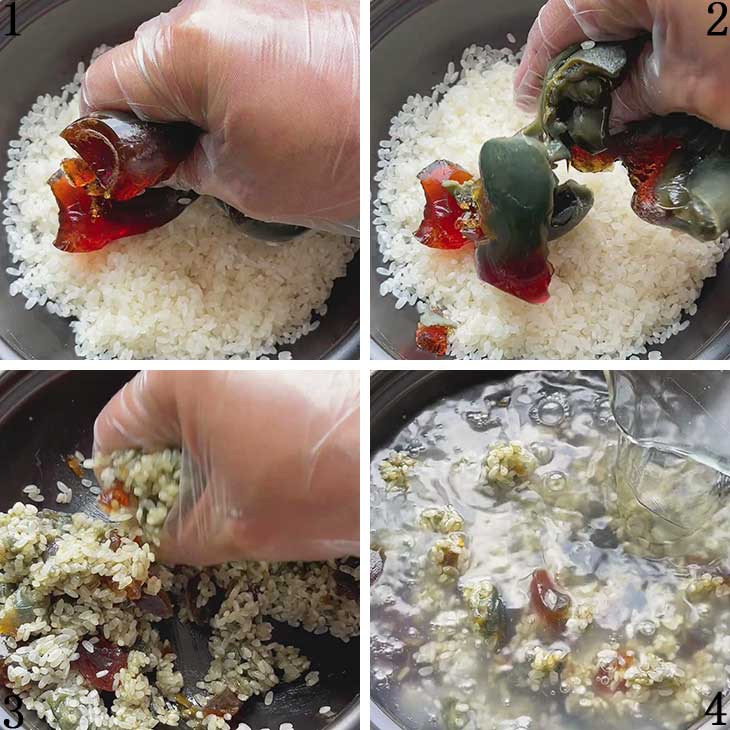
In a mixing bowl, marinate the pork slices with a mix of shredded ginger, salt, black pepper powder, cornstarch, and oil.

Next, add the marinated pork to the boiling rice and cook for about 2 minutes. Mix the pork into the rice and stir well to help make the congee thicker.
Lastly, add vegetables and your chosen garnish. Serve the congee while freshly cooked, but be careful since it will be hot!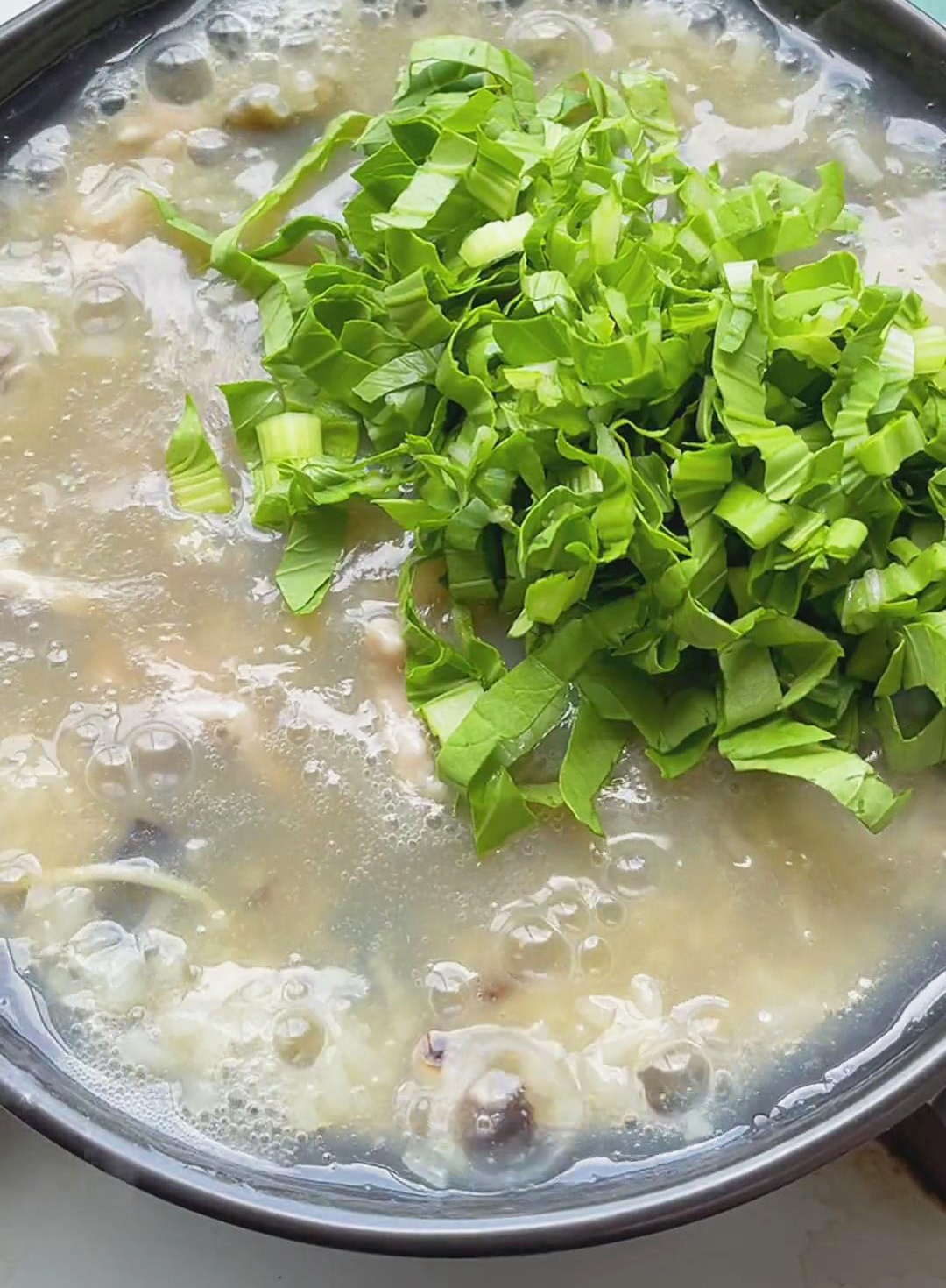

Century Egg and Pork Congee (皮蛋瘦肉粥)
Equipment
- Cooking pot with lid
- Mixing bowl for marinade
- Knife and chopping board
Ingredients
- 200 g of rice
- 2 whole century eggs
- Hot water enough to boil the rice and century eggs
- 100 g of pork bits
- 5 g of shredded ginger
- 1/2 tsp of salt
- 1/2 tsp of black pepper powder
- 1/2 tsp of cornstarch
- 1/2 tsp of oil
- 30 g of vegetables
Instructions
- In a cooking pot, add the century eggs and uncooked rice. Mash the century eggs with your hands and mix them well with the rice.
- Then, add enough hot water to submerge the rice and cook for 30 minutes.
- In a mixing bowl, marinate the pork slices with a mix of shredded ginger, salt, black pepper powder, cornstarch, and oil.
- Next, add the marinated pork to the boiling rice and cook for about 2 minutes. Mix the pork into the rice and stir well to help make the congee thicker.
- Lastly, add vegetables and your chosen garnish. Serve the congee while freshly cooked, but be careful since it will be hot!

